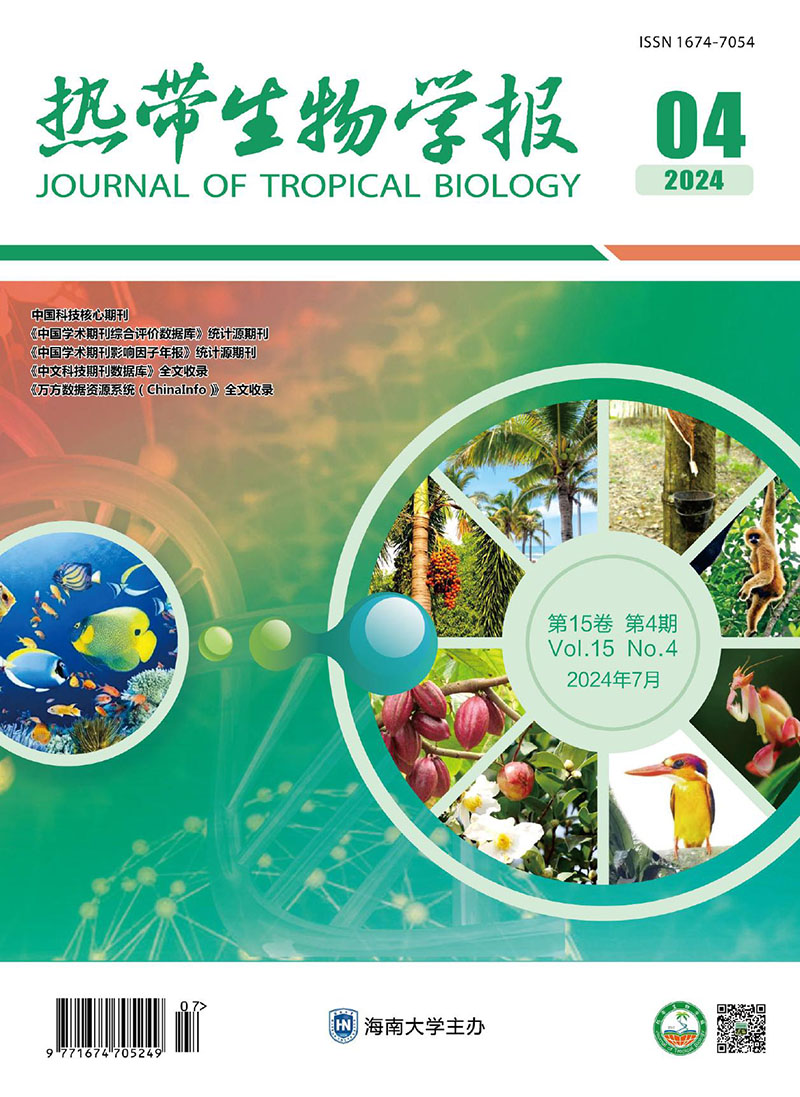|
[1]
|
CODY M L(Ed.). Habitat selection in birds[M]. Cambridge, MA:Academic Press, 1985. |
|
[2]
|
WIENS J A. The Ecology of Bird Communities[M]. Cambridge, UK:Cambridge University Press, 1992. |
|
[3]
|
JONES J. Habitat Selection Studies In Avian Ecology:A Critical Review[J]. The Auk, 2001, 118(2):557-562. |
|
[4]
|
GAILLARD J M, HEBBLEWHITE M, LOISONA, et al.Habitat-performance relationships:finding the right metric at a given spatial scale[J]. Philosophical transactions of the Royal Society of London Series B, Biological sciences,2010, 365(1550):2255-65. |
|
[5]
|
CHALFOUN A D, Schmidt K A. Adaptive breeding-habitat selection:is it for the birds?[J]. The Auk, 2012, 129:589-599. |
|
[6]
|
SUBEDI T R, ANADÓN J D, BARAL H S, et al. Breeding habitat and nest-site selection of Bearded Vulture Gypaetus barbatus in the Annapurna Himalaya Range of Nepal[J]. Ibis,2020, 162(1):153-161. |
|
[7]
|
FONTAINE J J, MARTIN T E. Parent birds assess nest predation risk and adjust their reproductive strategies[J].Ecology letters, 2006, 9(4):428-434. |
|
[8]
|
LAMANNA J A, HEMENWAY A B, BOCCADORI V, et al.Bird species turnover is related to changing predation risk along a vegetation gradient[J]. Ecology, 2015, 96(6):1670-1680. |
|
[9]
|
邹红菲,高忠斯,吴庆明,等.应用资源选择函数研究丹顶鹤的巢址选择[J].野生动物学报, 2018, 39(3):566-572. |
|
[10]
|
NICKLEY B, BULLUCK L P. Spanning the habitat gradient:Red-headed woodpecker nest-site selection in three distinct cover types[J]. Forest Ecology and Management,2019, 444:115-126. |
|
[11]
|
SCHMIDT K A, DALL S R X, VAN GILS J A. The ecology of information:an overview on the ecological significance of making informed decisions[J]. Oikos, 2010, 119(2):304-316. |
|
[12]
|
LAMBRECHTS M M, WIEBE L K, SUNDE P, et al.Nest box design for the study of diurnal raptors and owls is still an overlooked point in ecological, evolutionary and conservation studies:a review[J]. Journal of Ornithology, 2012, 153(1):23-34. |
|
[13]
|
KISS O, TOKODY B, LUDNAI T, et al. The effectiveness of nest-box supplementation for the conservation of European rollers(Coracias garrulus)[J]. Acta Zoologica Academiae Scientiarum Hungaricae, 2017, 63(1):123-135. |
|
[14]
|
KUDELSKA K, PODKOWA P, KARASKIEWICZ K, et al. Importance of nest boxes for breeding birds in forest areas-the Wielkopolski National Park case study[J].Sylwan, 2017, 161(11):949-957. |
|
[15]
|
CHARTER M, MEYROM K, LESHEM Y, et al. Does nest box location and orientation affect occupation rate and breeding success of Barn Owls Tyto alba in a semi-arid environment?[J]. Acta Ornithologica, 2010, 45(1):115-119. |
|
[16]
|
郑光美.中国鸟类分类与分布名录(第四版)[M].北京:科学出版社, 2023. |
|
[17]
|
原宝东,闫永峰.鹊鸲冬季和春季取食生态位初步研究[J].四川动物, 2016, 35(3):426-430. |
|
[18]
|
潘扬,高吉喜,周可新,等.城市绿地中鹊鸲繁殖期和非繁殖期夜栖地选择[J].生态学杂志, 2019, 38(9):2772-2779. |
|
[19]
|
JIN Y, FENG C, LIANG W. Non-kin infanticide by male Oriental Magpie Robins in nest boxes[J]. Ornithological Science, 2021, 20(2):241-245. |
|
[20]
|
姜仕仁.杭州鹊鸲的声行为[J].四川动物, 2003,(3):144-146 |
|
[21]
|
SINGH A, BHATT D, SETHI V K. Singing behaviour of the oriental magpie robin(Copsychus saularis)[J]. Journal of Ornithology, 2019, 160(1):185-193. |
|
[22]
|
HILL S D, ARYAL A, PAWLEY M D M, et al. So much for the city:urban-rural song variation in a widespread Asiatic songbird[J]. Integrative Zoology, 2018, 13(2):194-205. |
|
[23]
|
SINGH A, BHATT D, SETHI V K, et al. Nesting success of the oriental magpie robin Copsychus saularis in nest boxes and tree cavities[J]. Wildlife Biology, 2016, 22(6):277-283. |
|
[24]
|
靳雅萌.鹊鸲的繁殖行为:不同生境种群和不同观察方法的比较[D].海口:海南师范大学, 2021. |
|
[25]
|
WAN G X, ZHAO H H, LIU X Z, et al. Predation of Daurian redstarts offspring in nest boxes by the Oriental magpie-robin and tree sparrow[J]. Ecology and Evolution,2023, 13(5):e10093. |
|
[26]
|
DAVIS S K. Nest-site selection patterns and the influence of vegetation on nest survival of mixed-grass prairie passerines[J]. The Condor, 2005, 107(3):605-616. |
|
[27]
|
谢凡,李昌林,鲁碧耕,等.鸡形目鸟类巢址选择研究进展[J].四川动物, 2022, 41(2):233-240. |
|
[28]
|
|
|
[29]
|
张建伟,王建峰,刘建平,等.不同纬度洞巢鸟类对人工巢箱的利用及差异[J].动物学杂志, 2019, 54(4):465-470. |
|
[30]
|
郑光美.鸟类学(第2版)[M].北京:北京师范大学出版社, 2015. |
|
[31]
|
CODY M L. Habitat Selection in Birds:The Roles of Vegetation Structure, Competitors, and Productivity[J]. BioScience, 1981, 31(2):107-113. |
|
[32]
|
滕甜甜,吴冠糆,冯艳民,等.原鸡海南亚种的巢址选择[J].热带生物学报, 2022, 13(3):220-226. |
|
[33]
|
郭瑞萍,吴庆明,陈露,等.龙凤保护区普通鸬鹚巢特征与巢址选择[J].生态学报, 2023, 43(6):2220-2227. |
|
[34]
|
SCHMIDT K A. Foraging theory as a conceptual framework for studying nest predation[J]. Oikos, 1999, 85(1):151-160. |
|
[35]
|
FLESKES J P, MAUSER D M, YEE J L, et al. Flightless and post-molt survival and movements of female Mallards molting in Klamath Basin[J]. Waterbirds, 2010, 33(2):208-220. |
|
[36]
|
PETERSEN K L, HOGG S, ENGLUND J V. Nest-site selection and nesting success in a restored population of Ospreys(Pandion haliaetus)in the Minneapolis-St. Paul,Minnesota(USA)area[J]. Journal of Raptor Research,2020, 54(3):245-254. |
|
[37]
|
RENDELL W B, ROBERSON R J. Nest-site characteristics, reproductive success and cavity availability for Tree Swallows breeding in natural cavities[J]. The Condor,1989, 91(4):875-885. |
|
[38]
|
SHOCHAT E, WARREN P S, FAETH S H, et al. From patterns to emerging processes in mechanistic urban ecology[J]. Trends in Ecology&Evolution, 2006, 21:186-191. |
|
[39]
|
蓝方源,马行健,逯金瑶,等.城市化对鸟类筑巢的影响研究综述[J].生物多样性, 2021, 29(11):1539-1553. |






 DownLoad:
DownLoad: